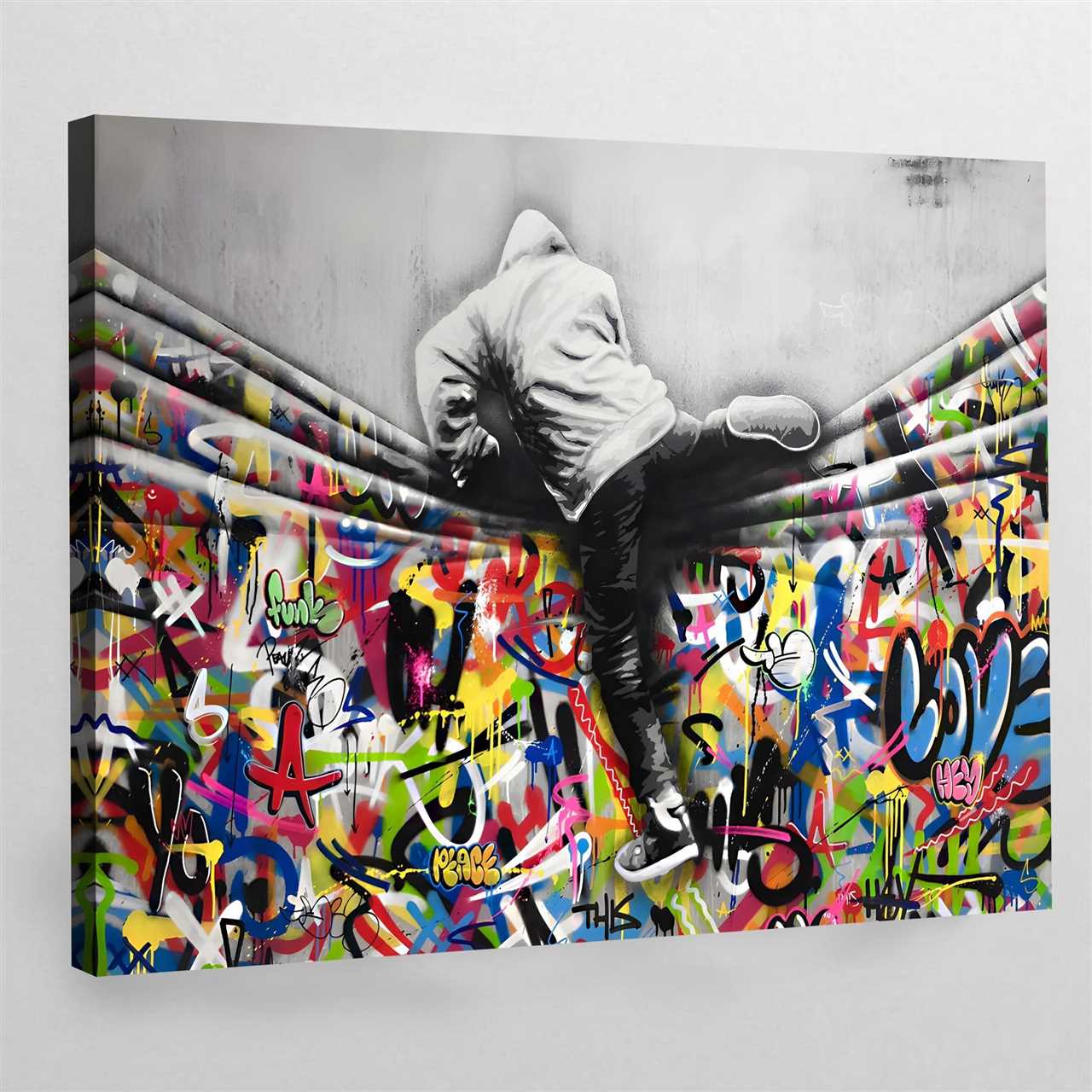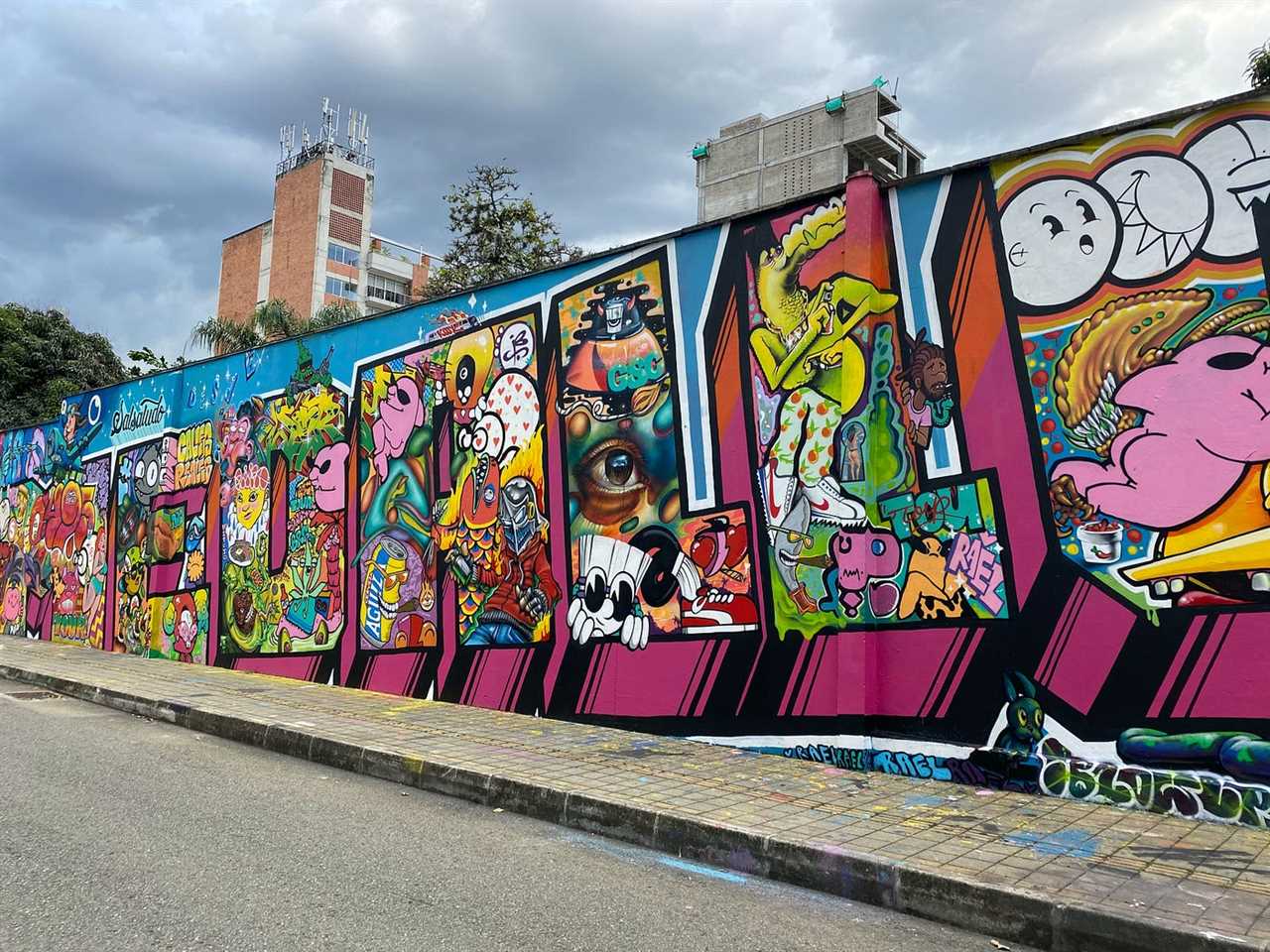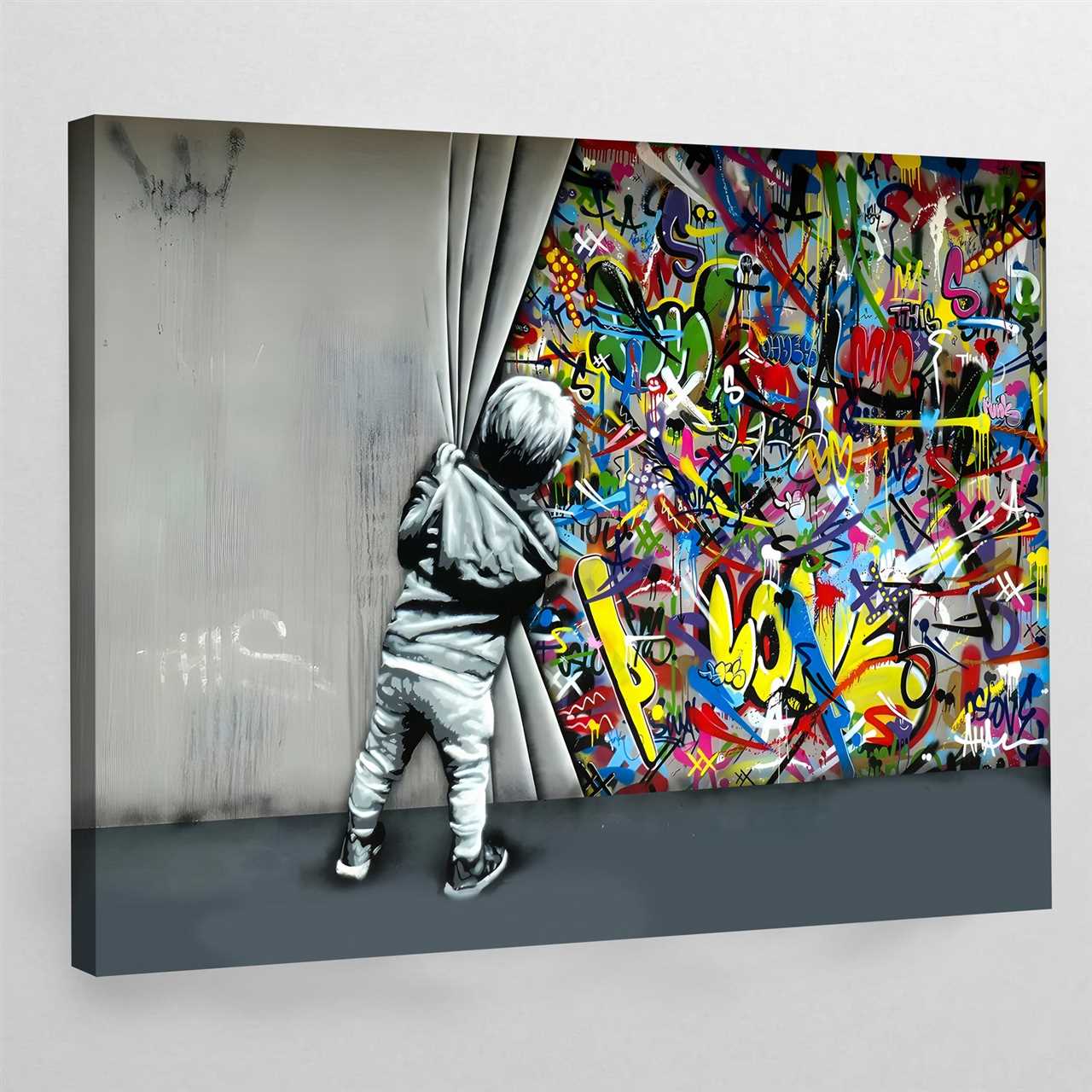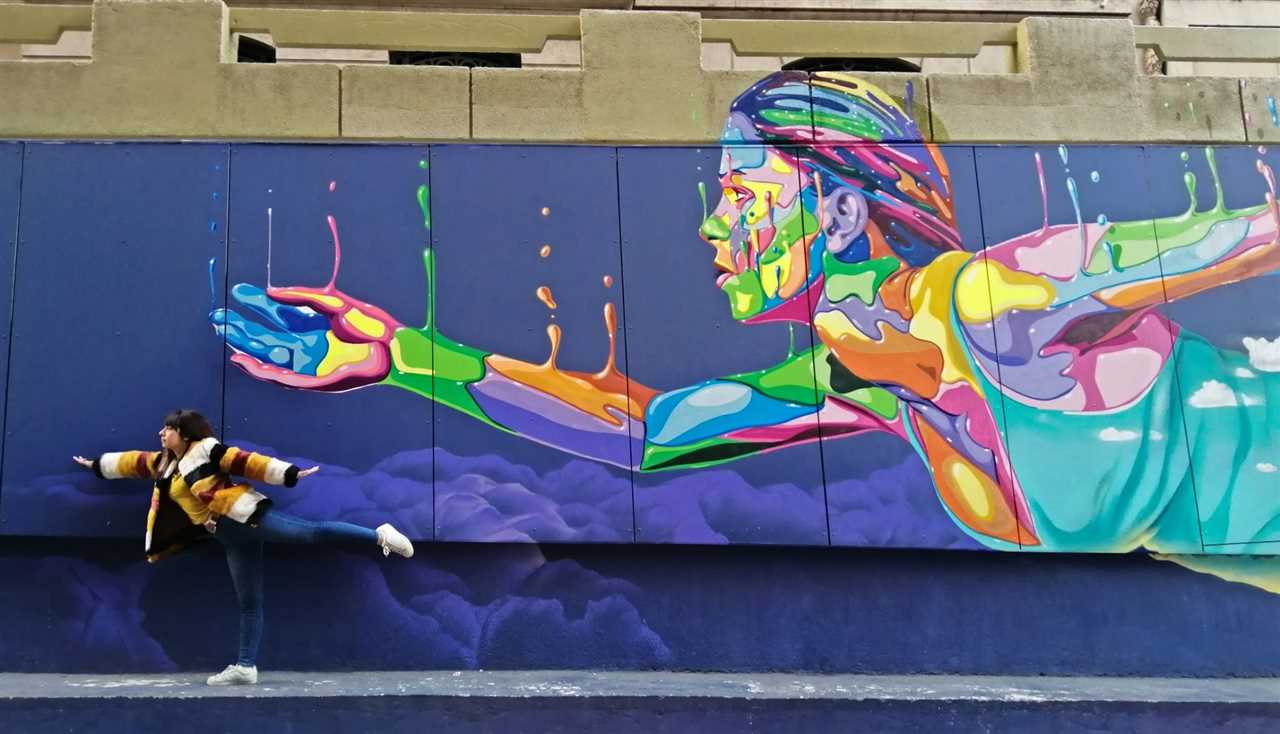
Street art has become an increasingly popular form of artistic expression in cities all around the world. One of the most captivating and vibrant forms of street art is mural drawing. These large-scale paintings are often found adorning buildings, walls, and other public spaces, transforming them into colorful and eye-catching masterpieces.
Mural drawing allows artists to create stunning works of art that are accessible to everyone. Unlike paintings displayed in galleries or museums, murals are free for anyone to enjoy. They bring art out of the confines of traditional art spaces and into the heart of the community, creating a connection between the artist and the people who encounter their work.
While mural drawing may seem spontaneous and improvised, it is often a thoughtful and meticulous process. Artists carefully plan their compositions, taking into consideration the size and shape of the wall, as well as the surrounding environment. They use a variety of techniques and materials, such as brushes and spray paint, to create intricate details and vibrant colors that bring their vision to life.
The subjects of mural drawings are as diverse as the artists themselves. Some murals depict scenes from nature, while others showcase portraits of influential figures or tell stories of local history and culture. Each mural is a unique expression of the artist’s creativity and serves as a powerful statement or message.

Mural drawing dates back thousands of years to ancient civilizations such as Egypt, Mesopotamia, and Greece. These early murals were often created as large-scale decorations, depicting religious and historical scenes on the walls of temples and palaces.
In the Middle Ages, mural drawing became a popular form of art in churches and cathedrals. These murals were used to educate illiterate congregations about religious stories and teachings. The Renaissance period saw a resurgence in mural drawing, with artists such as Michelangelo and Leonardo da Vinci creating magnificent frescoes on the walls and ceilings of palaces and churches.
During the 20th century, mural drawing gained popularity as a form of political and social commentary. Artists such as Diego Rivera in Mexico and David Alfaro Siqueiros in the United States used murals to depict the struggles of the working class and the injustices of society. These murals became powerful symbols of resistance and revolution.
Today, mural drawing continues to be a vibrant and expressive art form. It has evolved beyond its traditional boundaries and can be found on walls, bridges, and buildings in cities around the world. Mural artists use a variety of techniques and styles to create stunning works of art that engage and inspire viewers.
| Period | Key Artists | Key Themes |
|---|---|---|
| Ancient Civilizations | – | Religious and historical scenes |
| Middle Ages | – | Religious stories and teachings |
| Renaissance | Michelangelo, Leonardo da Vinci | Frescoes in palaces and churches |
| 20th Century | Diego Rivera, David Alfaro Siqueiros | Social and political commentary |
| Present Day | – | Various styles and themes |
The Elements of Mural Design

Creating a mural involves carefully considering various elements of design to bring the artwork to life. These elements contribute to the overall composition and impact of the mural, ensuring that it resonates with viewers and communicates the desired message. Here are some key elements to consider when designing a mural:
1. Subject and Theme

The subject and theme of a mural serve as the foundation of its design. It is important to choose a subject that is relevant to the location and community where the mural will be displayed. The theme should reflect the message or story that the artist wants to convey.
2. Layout and Composition

The layout and composition of a mural dictate how the elements within the artwork are arranged. Thoughtful consideration should be given to the placement of different objects, figures, and colors to create a visually pleasing and balanced composition. This includes the use of negative space, perspective, and scale.
Tip: The focal point of the mural should be strategically placed to draw the viewer’s attention and convey the main message of the artwork.
3. Color Palette

Color plays a crucial role in mural design as it sets the overall mood, atmosphere, and emotional impact. Artists should carefully select a color palette that complements the subject and theme of the mural. Bold and vibrant colors often attract attention, while muted tones can create a more subtle and calming effect.
Tip: Consider the psychological effects of colors when choosing the color palette for your mural. For example, warm colors like red and orange can evoke feelings of energy and passion, while cool colors like blue and green can create a sense of tranquility.
4. Style and Technique

The style and technique used in a mural can add depth and character to the artwork. It is important to select a style that aligns with the desired aesthetic and message of the mural. From photorealism to abstract, there are various styles to choose from.
Note: Experimenting with different techniques, such as stenciling, brushwork, or spray painting, can further enhance the visual impact of the mural.
By carefully considering these elements of mural design, artists can create captivating and impactful street art that engages viewers and leaves a lasting impression.
Techniques and Tools for Creating Mural Drawings

Creating a mural drawing requires a combination of artistic skill, technique, and the right tools. Here are some techniques and tools that artists often use when creating mural drawings:
Sketching and Planning: Before starting a mural drawing, it is important to plan and sketch out the design. This helps ensure that the composition and proportions are correct. Artists might use a sketchbook or digital tools to create a detailed sketch of the mural before beginning the actual drawing.
Grid Method: The grid method is a popular technique used to transfer a smaller sketch onto a larger surface. Artists create a grid on both the sketch and the wall, and then transfer the design by copying each section from the small grid to the corresponding section on the wall. This technique helps maintain the proportions and overall accuracy of the drawing.
Freehand Drawing: Some artists prefer to freehand their mural drawings directly onto the wall. This technique requires a keen eye for detail and the ability to visualize and create the design without a pre-drawn sketch. Freehand drawing allows for more spontaneity and a looser, more organic feel.
Paint and Brushes: When creating a mural drawing, artists often use acrylic or spray paint. Acrylic paint is versatile, easy to work with, and offers a wide range of vibrant colors. Spray paint, on the other hand, can create a graffiti-style effect and is ideal for creating large-scale murals. Brushes of various sizes and shapes are used to apply the paint and add details to the drawing.
Aerosol Techniques: Many mural artists use aerosol cans to create intricate details and effects in their drawings. Techniques such as fading, blending, and layering can be achieved using aerosol cans, allowing for a more dynamic and textured finished piece.
Stencils: Stencils are often used to create repetitive patterns or add intricate details to a mural drawing. Artists can create custom stencils or use pre-made ones to save time and achieve precise designs.
Weather Resistance: When creating an outdoor mural drawing, artists need to choose materials that are weather-resistant. UV-resistant paints and protective coatings can help extend the lifespan of the mural and keep the colors vibrant, even when exposed to the elements.
Creating a mural drawing is a complex and rewarding process that requires skill, creativity, and attention to detail. By using these techniques and tools, street artists can bring color and art to public spaces, making a lasting impact on the community.
Famous Mural Artists and their Impact on the Street Art Movement

The world of street art has been greatly influenced by several famous mural artists. Through their unique styles and powerful messages, these artists have made a significant impact on the street art movement.
1. Banksy

Without a doubt, Banksy is one of the most famous mural artists of our time. His thought-provoking and politically charged artworks have revolutionized the way we view street art. Banksy’s stenciled works often depict social or political commentary, and his anonymity adds an air of mystery to his art.
2. Shepard Fairey

Another prominent figure in the street art scene is Shepard Fairey. Best known for his iconic “Hope” poster featuring Barack Obama, Fairey’s murals often address issues like power, propaganda, and rebellion. His unique style and use of bold colors have inspired many aspiring street artists around the world.
These famous mural artists have not only transformed the urban landscape with their artwork, but they have also challenged societal norms and sparked important conversations. Their creations serve as a colorful expression of the thoughts, beliefs, and struggles faced by individuals and communities.
The impact of these artists goes beyond the aesthetic value of their murals. They have successfully brought attention to important social issues and initiated debates on topics such as inequality, consumerism, and politics. Furthermore, their art has inspired other artists to use public spaces as a canvas for self-expression and to engage with their local communities.
Overall, the works of these famous mural artists have contributed greatly to the development and recognition of street art as a legitimate art form. Their creativity and activism have transformed city walls into powerful vehicles for social change.

I am a mural enthusiast and a fervent admirer of street art. Rather than creating murals myself, I am passionate about collecting them. My love for street art knows no bounds. I am dedicated to curating and cherishing these artworks that grace the streets. My collection stands as a testament to my profound appreciation for this form of artistic expression.
read about me



